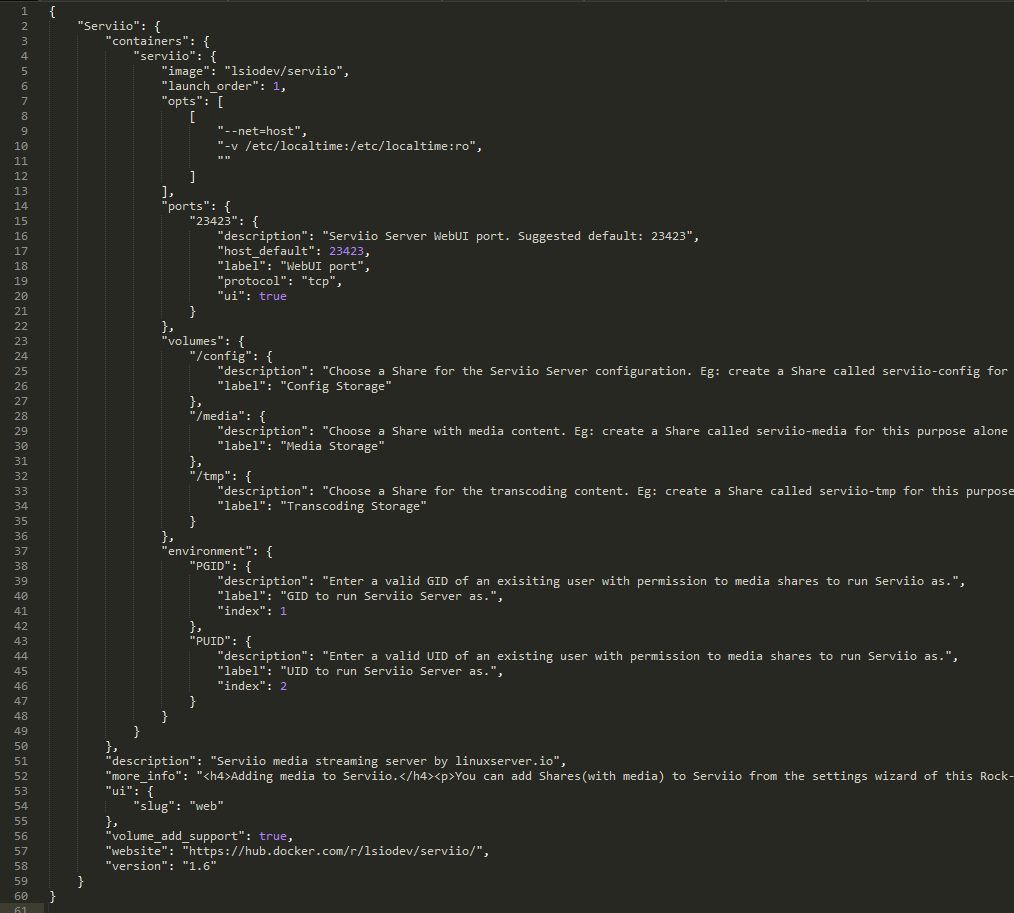Hi there,
Having started to write a Rock-on for Serviio streaming media server as its not in the registry and it could be useful to somebody else, i wonder about a particular implementation detail.
(WIP)
(scusi for the shot-only; i’m unsuccessful in correctly quoting the formatted code)
This Rock-on won’t install for now, so i currently use the plain Docker container created from lsiodev’s image, which runs perfectly fine. Cmdline for that:
/usr/bin/docker run --log-driver=syslog -d --restart=unless-stopped --name serviio --net=host -v /etc/localtime:/etc/localtime:ro -v /mnt2/rockons_config:/config -v /mnt2/media_audio:/media/audio -v /mnt2/media_graphics:/media/graphics -v /mnt2/media_video:/media/video -v /mnt2/tmp:/tmp -p 23423:23423/tcp -e PGID=1000 -e PUID=1000 lsiodev/serviio
Now, for the problem: For the /media mountpoint in volumes section, how can one specify a need for multiple selections in the RS UI? With the above, during install i can only select one share. But, i (and maybe others) have separate shares for Audio, Docs, Graphics, Video. All of these should thus be mounted under /media; e.g.
/media/audio
/media/documents
/media/graphics
/media/videos
and so on.
Is there the possibility to get a multi-select dropdown list, or similar, without having to workaround by pre-specifying 4 separate mountpoints like in my case? Scanning f.e. the Plex JSON brought no clues.
If somebody could figure this out; since last night i’m working on getting the docker-rdp-calibre to run correctly, and would like to publish this JSON next as calibre ebook content server is up for inclusion too.
